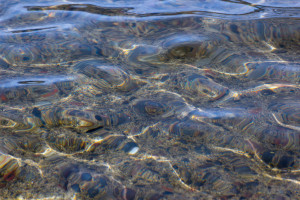
As demand for fresh water escalates in the southwestern United States and Mexico, Canada’s water resources may be drained, if proponents of interbasin water transfers have their way. Continent-wide water transfer proposals, initiated by engineers in the 1960s, are being revisited as possible solutions to water scarcity in the desert southwest. Continuing development in the region, coupled with the drought of the 1980s, tax the existing supply beyond sustainable levels. As a result, Canada’s abundant fresh water sources may regrettably provide a quick fix, while the harder tasks of improved water management and better land-use planning are ignored.
Fueling the renewed interest in international water transfer projects is the pending North American Free Trade Agreement (NAFTA). NAFTA and the U.S.-Canada Free Trade Agreement of 1988 (FTA) essentially prevent Canada or any of her provinces from placing restrictions on the export of water. The trade agreements thus provide new hope for developers, agribusiness and policy makers anxious to build a continental water system. This brief memorandum underscores the need for the wise management and conservation of North America’s fresh water resources. Moreover, it seeks to unite concerned groups in a continent-wide network aimed at monitoring and preventing efforts to divert Canada’s water resources to the southwestern United States and Mexico. Recent trends indicate that commercial interests, which view water not as a dwindling ecological resource but merely as a commodity, are successfully lobbying policy makers to resurrect the interbasin water schemes at the expense of the continent’s hydrological integrity. Should Canada, the U.S., and Mexico enact NAFTA, environmentalists fear that water’s essential ecological role will be sacrificed for the sake of unsustainable growth in arid regions of the continent.
The next section of this memorandum briefly describes the primary continent-wide water transfer ·projects still under consideration, such as the North American Water.and Power Alliance (NAWAPA). The third section discusses relevant trade law provisions, including FTA, NAFTA, and the General Agreement on Tariffs.an4. Trade (GATT). The fourth section discusses other trends making the construction of large-scale transfer projects more likely. The final section offers recommendations for future activities to move us from the current myopic policy patchwork to an ecologically sounder, conservation-oriented water policy.
